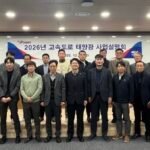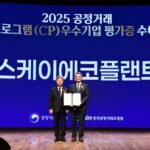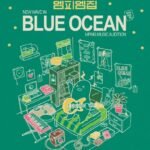A customer seeks to take out a mortgage loan from Kookmin Bank, South Korea’s largest lender
South Korea’s household loan market is witnessing the balloon effect as tighter government lending rules in Seoul and its surrounding metropolitan area prompt people to flock to regional, online and secondary financial institutions.
According to industry data on Sunday, the outstanding balance of household lending by Korea’s five commercial banks stood at 732.08 trillion won ($523.8 billion) at the end of October, up by 1.1 trillion won, or 0.2%, from 730.97 trillion won in the previous month.
Last month’s increased household debt was just a fifth of September’s 5.6 trillion won growth.
The significant slowdown was largely seen at major commercial banks in the capital thanks to the government’s stricter lending regulations.
The BOK cut policy rates last month amid righing household debt
With borrowing becoming increasingly difficult in Seoul and the surrounding metropolitan area, households rushed to regional banks, internet banks, and second-tier financial organizations instead, creating a balloon effect, data showed.
Analysts said the country’s overall household debt situation will remain precarious, clouding growth in Asia’s fourth-largest economy and keeping the Bank of Korea in a bind over the central bank’s next monetary move toward easing.
TIGHTER LENDING RULES
In September, the Financial Services Commission (FSC), Korea’s top financial regulatory body, implemented the second phase of the stressed debt service ratio (DSR) regulation, limiting individual borrowing capacity.
Major Banks followed suit, halting mortgage loans for multiple homeowners, restricting individuals’ requests for mortgage loans and raising their lending rates to curb growth in household debt.
(Graphics by Dongbeom Yun)
Banks’ mortgage loan interest rates rose to more than 4% per annum, on average, from 3% earlier.
The commission originally planned to implement tighter DSR rules in July but delayed it until Sept. 1 to limit any negative impact on heavily indebted households and individuals.
The five banks are KB Kookmin, Shinhan, Hana, Woori and Nonghyup, belonging to KB Financial Group, Shinhan Financial Group, Hana Financial Group, Woori Financial Group and Nonghyup Financial Group, respectively.
AGGRESSIVE LENDING BY LOCAL, ONLINE, SECOND-TIER BANKS
As the government squeezed major lenders in the Seoul metropolitan to refrain from lending, the balloon bulged out elsewhere.
Financial Services Commission chief Kim Byoung-hwan vows to take measures to curb Korea’s growing household debt
Local banks, internet banks, savings banks, cooperatives and other second-tier financial institutions have aggressively attracted households and individuals by offering them relatively lower mortgage loans – a strategy to expand their client base and increase profits.
On Oct. 8, Busan Bank unveiled its mortgage product “ONE Home Loan,” which charges an annual interest rate of 3.76%, lower than KB Kookmin Bank’s 3.99% and Shinhan Bank’s 4.26%.
BNK Kyongnam Bank has also lowered the annual interest rate of its “BNK Mobile Home Loan” to 3.99%.
Data showed household loans provided by secondary financial institutions alone increased by 2 trillion won in October from the month prior.
“October’s total household lending, including those from the five major banks and regional, internet banks and secondary financial institutions, seems to be similar to or even greater than the previous month’s 5.2 trillion won,” said a commission official.
Apartment prices are rising in Seoul
CLOSELY MONITORING
Overall household lending growth was boosted by a surge in demand for mortgage loans, which grew amid signs of a recovery in the property market.
Financial authorities are closely monitoring household debt growth at secondary financial institutions.
Last month, the FSC held household debt-related meetings twice to review household lending and issued warnings against second-tier financial institutions.
The regulator advised cooperatives and mutual finance companies to refrain from mortgage lending, a relatively easier means of gaining profits, and urged them to focus on supporting mid- and low-credit borrowers in the low-income brackets.
Financial authorities, however, are increasingly concerned as blanket regulations could restrict low-income individuals’ access to funding for their various financial needs.
Last month, the BOK slashed its benchmark interest rate by a quarter percentage point to 3.25% — the central bank’s first rate cut in more than four years.
By Hanjong Choi and Eui-Jin Jeong
onebell@hankyung.com
In-Soo Nam edited this article.















